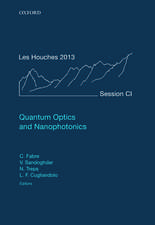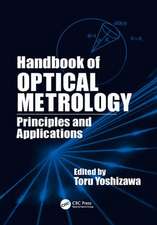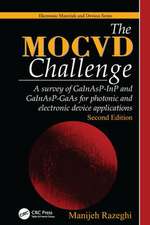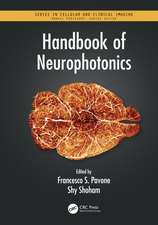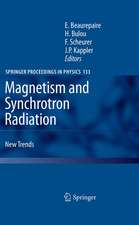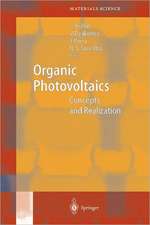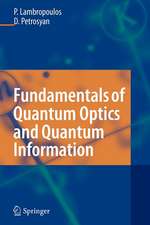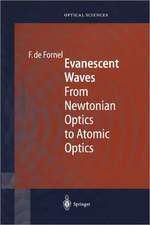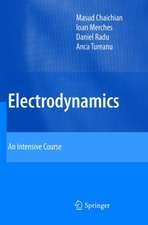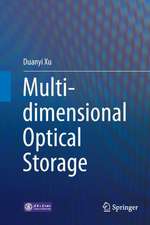Handbook of the Eurolaser Academy: Volume 1
Editat de Dieter Schuockeren Limba Engleză Paperback – 21 noi 2012
| Toate formatele și edițiile | Preț | Express |
|---|---|---|
| Paperback (2) | 396.78 lei 6-8 săpt. | |
| Springer Us – 21 noi 2012 | 396.78 lei 6-8 săpt. | |
| Springer Us – 22 oct 2012 | 410.46 lei 6-8 săpt. |
Preț: 396.78 lei
Nou
Puncte Express: 595
Preț estimativ în valută:
75.93€ • 78.44$ • 63.20£
75.93€ • 78.44$ • 63.20£
Carte tipărită la comandă
Livrare economică 25 martie-08 aprilie
Preluare comenzi: 021 569.72.76
Specificații
ISBN-13: 9781461374169
ISBN-10: 1461374162
Pagini: 448
Ilustrații: XII, 430 p.
Dimensiuni: 155 x 235 x 24 mm
Greutate: 0.62 kg
Ediția:1998
Editura: Springer Us
Colecția Springer
Locul publicării:New York, NY, United States
ISBN-10: 1461374162
Pagini: 448
Ilustrații: XII, 430 p.
Dimensiuni: 155 x 235 x 24 mm
Greutate: 0.62 kg
Ediția:1998
Editura: Springer Us
Colecția Springer
Locul publicării:New York, NY, United States
Public țintă
ResearchCuprins
1 Basic Laser Mechanisms.- 2 Optics, Resonators and Beams.- 3 Carbon Dioxide Lasers.- 4 Solid State Lasers.- 5 Excimer Lasers.- 6 Semiconductor Lasers.- 7 Safety.- 8 Beam Manipulation.
Descriere
Descriere de la o altă ediție sau format:
If in some processes oxygen is used, additional energy is provided at a rate P ch by chemical reactions. The flow of energy per unit time can then be written: (1. 2) From the above it can be made clear that it is the rate of energy fluxes, i. e. 2 intensities [J/ms] that determines into which channel the energy goes and how the interaction zone will be modified in its state (solid, liquid, gaseous) and geometrical shape (plane, dip, deep hole) -in other words which kind of treatment process will be established (hardening, welding, drilling etc. ). In the following, it will be shown that, in fact, it is the intensity of the beam, which together with the interaction time, primarily governs the interaction phenomena. 1. 1. 2 Laser beam properties determining interaction and energy coupling etJeets In order to yield an efficient process, it is necessary to obtain adequate intensity at the workpiece and to couple a fraction of the incident power as high as possible into the material. The beam properties being of importance in this respect are, (Hugel, 1992): 1. the wavelength A. , governing, in principle, the focusability and absorptivity; 2. the polarisation, having considerable influence on the absorptivity for large angles of incidence; 3. the power P which together with the achievable spot diameter d L f determines the intensity in the interaction zone; 4.
If in some processes oxygen is used, additional energy is provided at a rate P ch by chemical reactions. The flow of energy per unit time can then be written: (1. 2) From the above it can be made clear that it is the rate of energy fluxes, i. e. 2 intensities [J/ms] that determines into which channel the energy goes and how the interaction zone will be modified in its state (solid, liquid, gaseous) and geometrical shape (plane, dip, deep hole) -in other words which kind of treatment process will be established (hardening, welding, drilling etc. ). In the following, it will be shown that, in fact, it is the intensity of the beam, which together with the interaction time, primarily governs the interaction phenomena. 1. 1. 2 Laser beam properties determining interaction and energy coupling etJeets In order to yield an efficient process, it is necessary to obtain adequate intensity at the workpiece and to couple a fraction of the incident power as high as possible into the material. The beam properties being of importance in this respect are, (Hugel, 1992): 1. the wavelength A. , governing, in principle, the focusability and absorptivity; 2. the polarisation, having considerable influence on the absorptivity for large angles of incidence; 3. the power P which together with the achievable spot diameter d L f determines the intensity in the interaction zone; 4.


